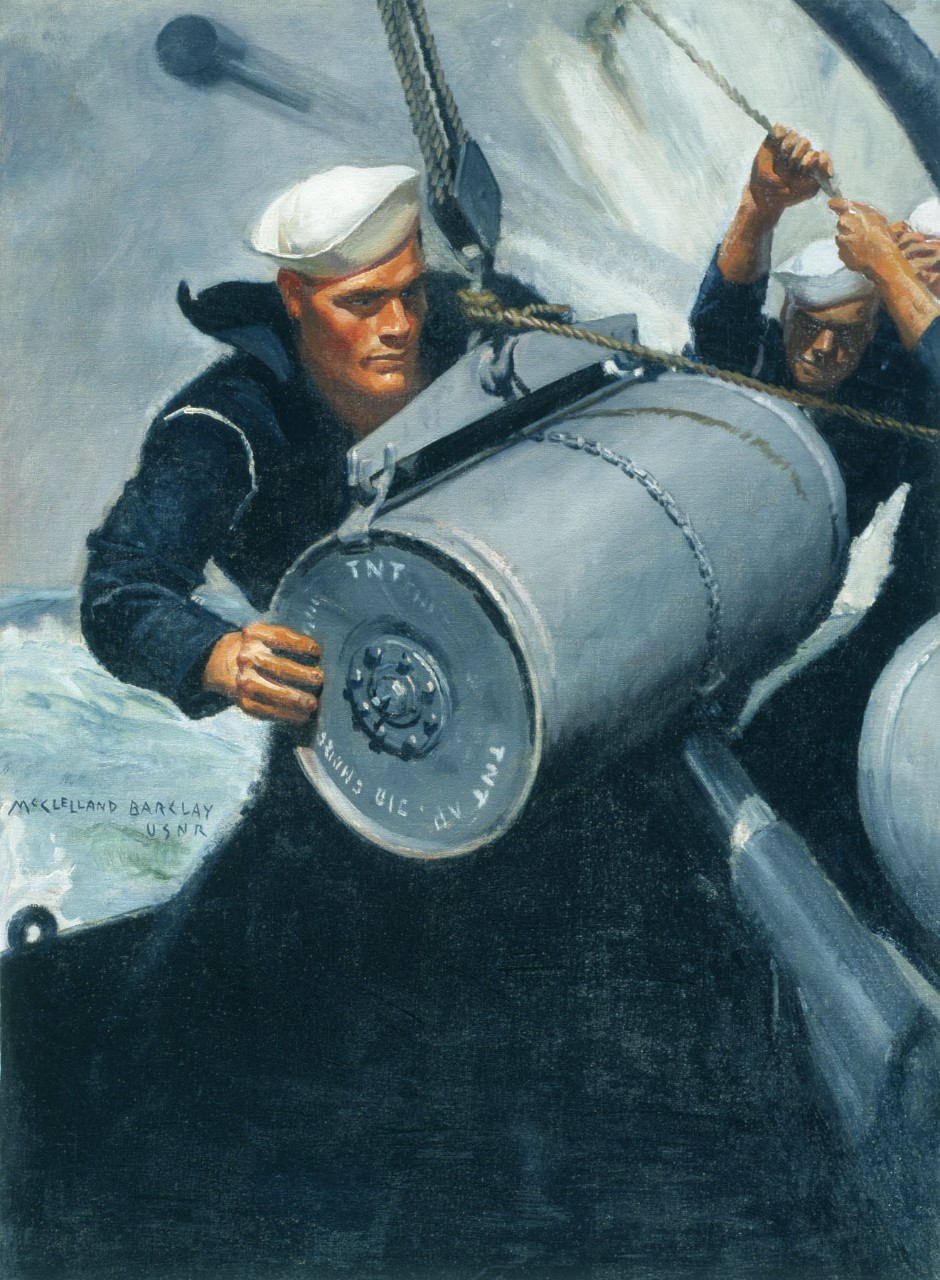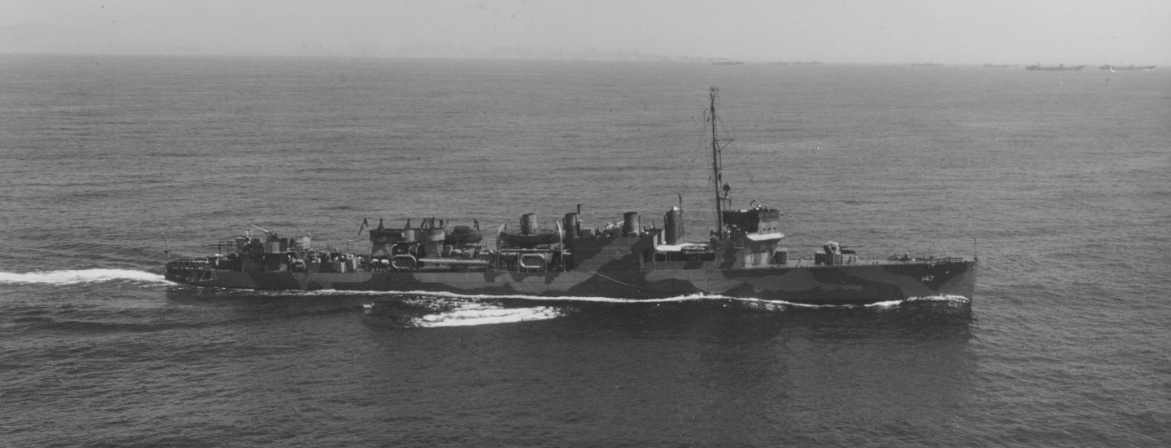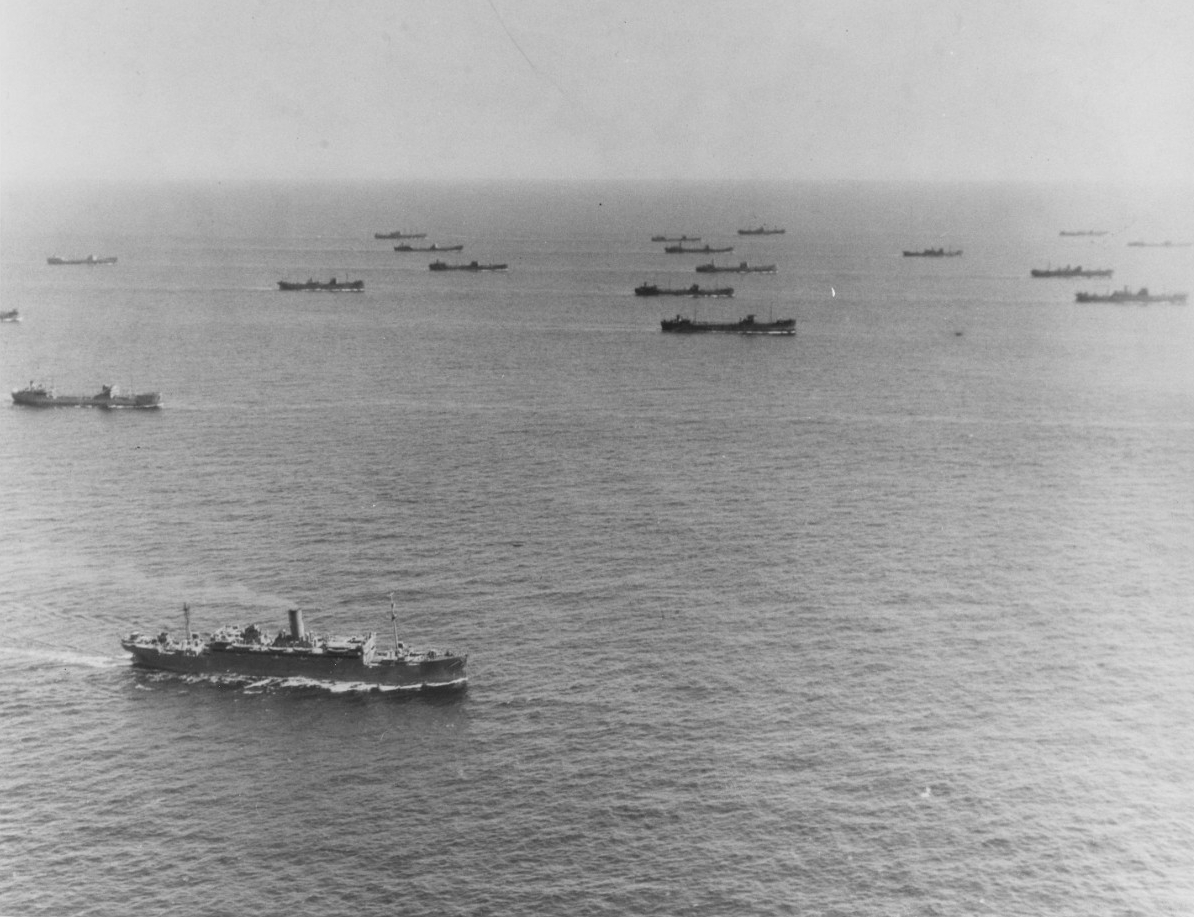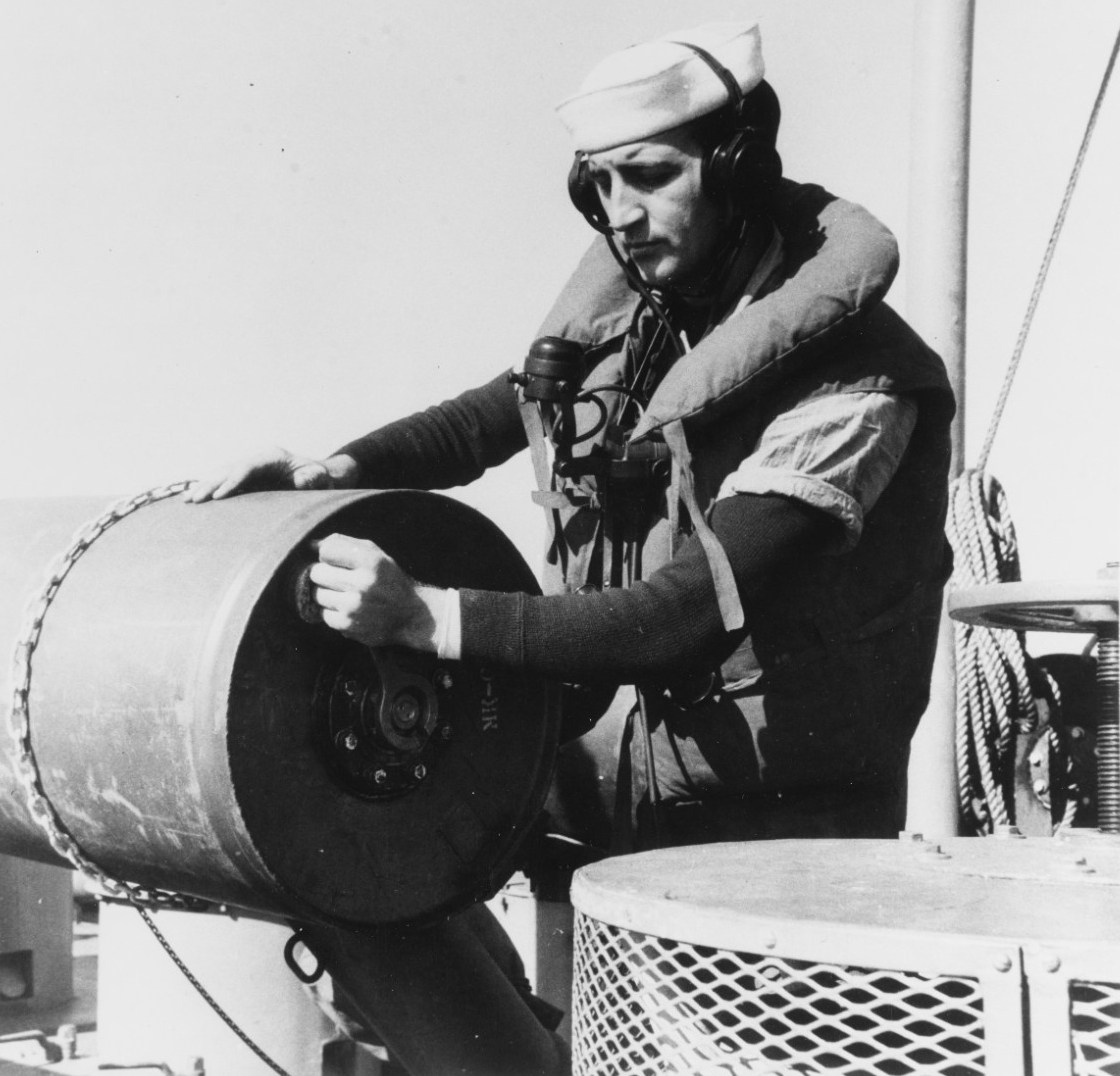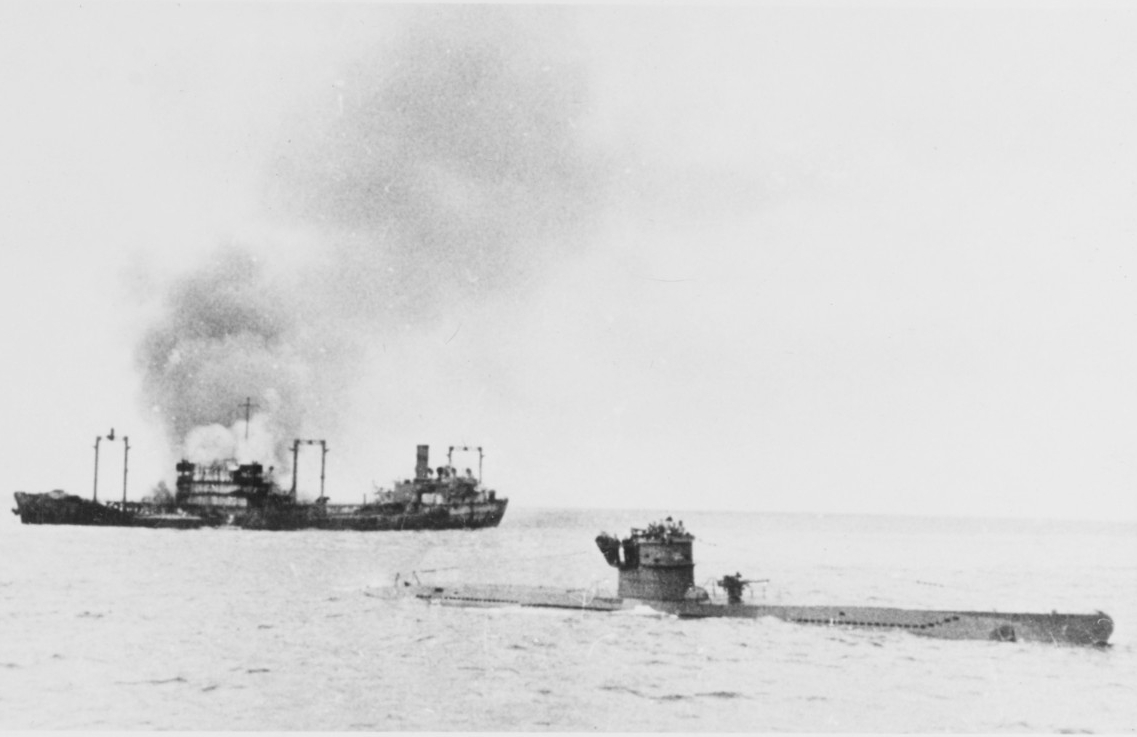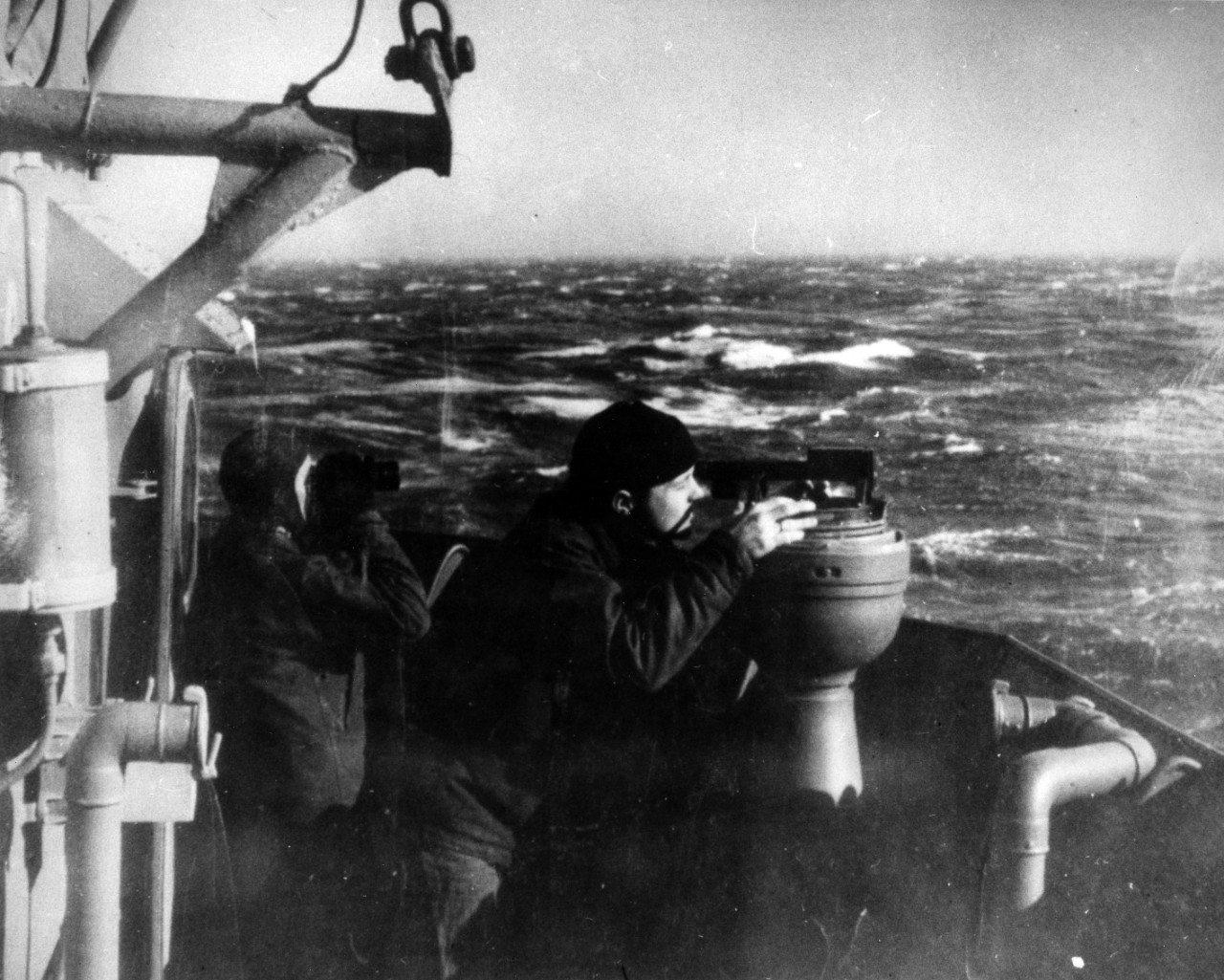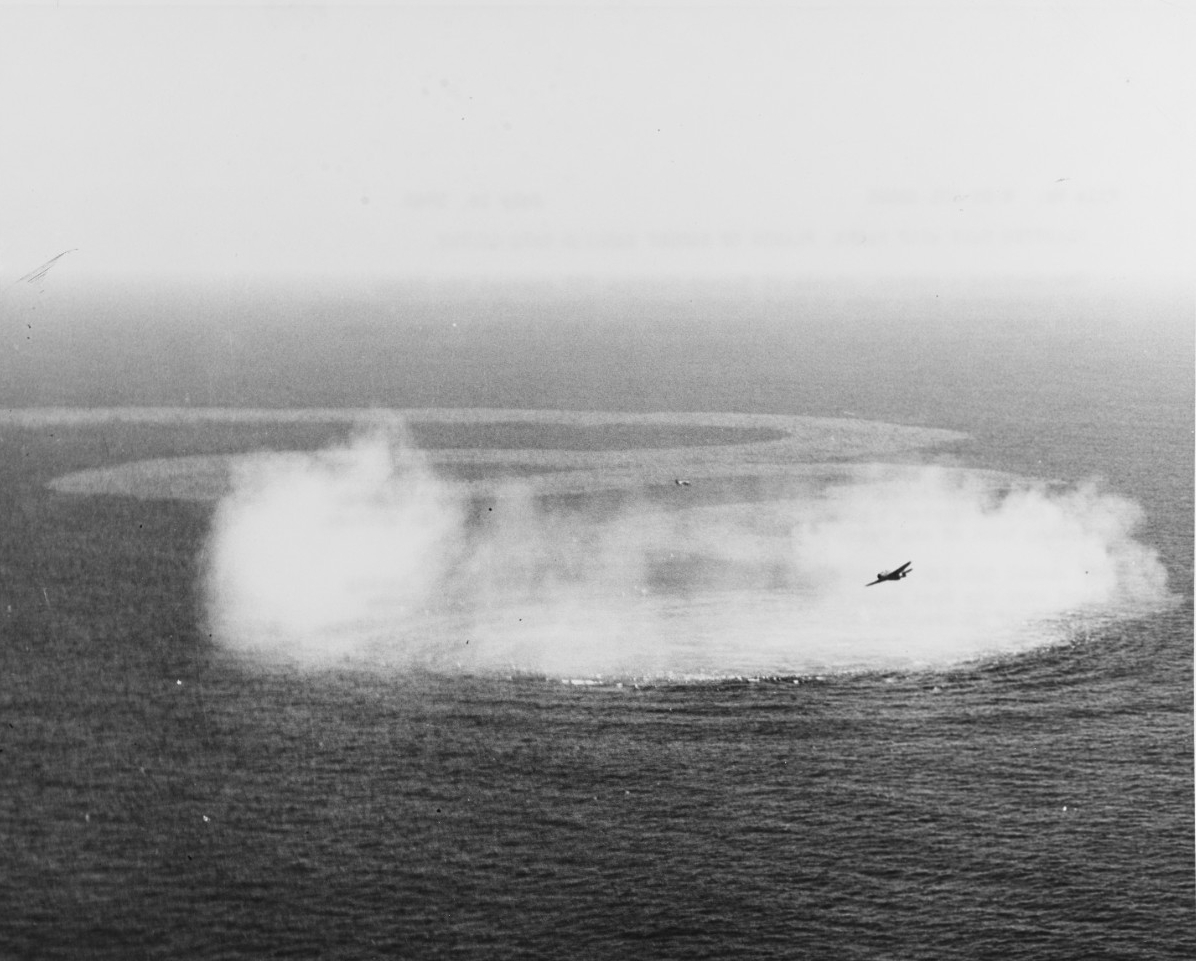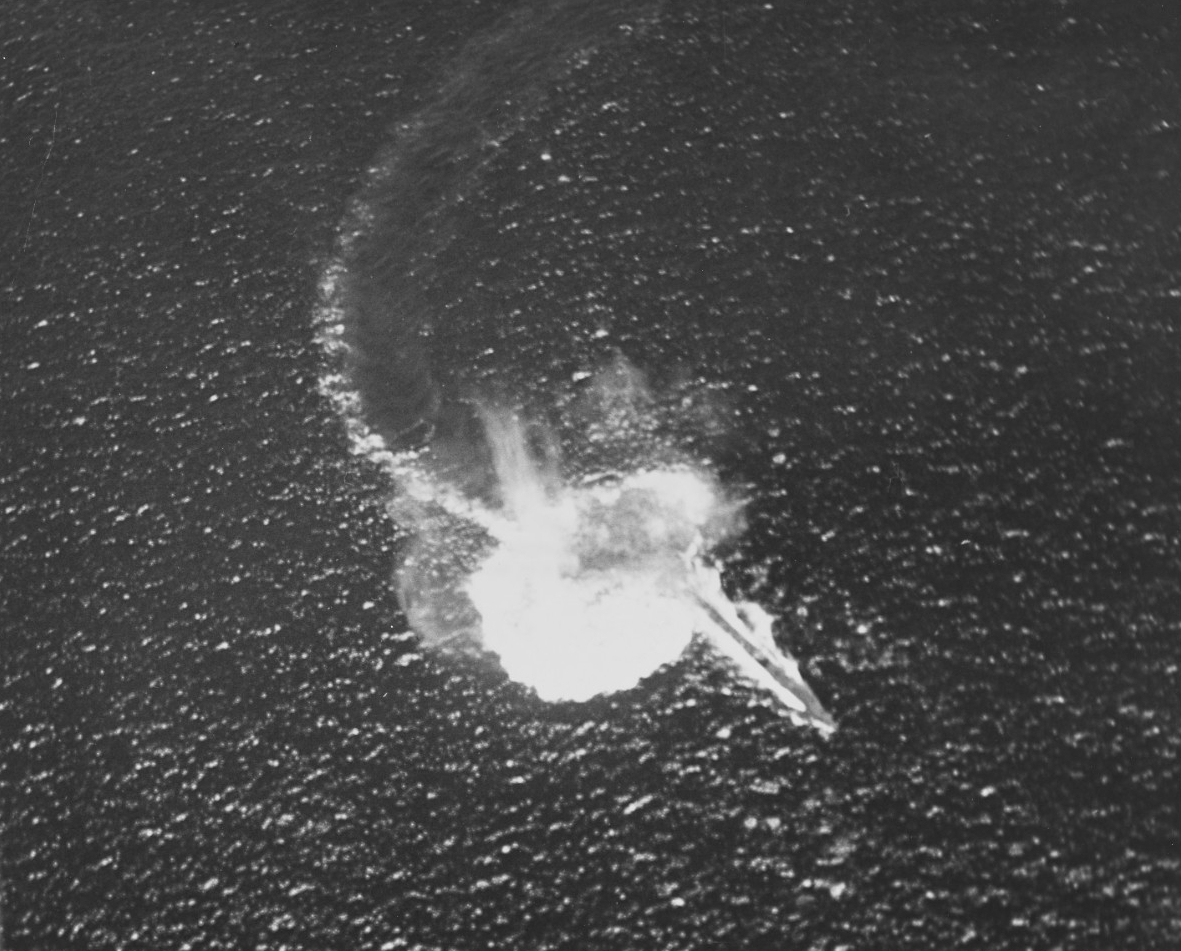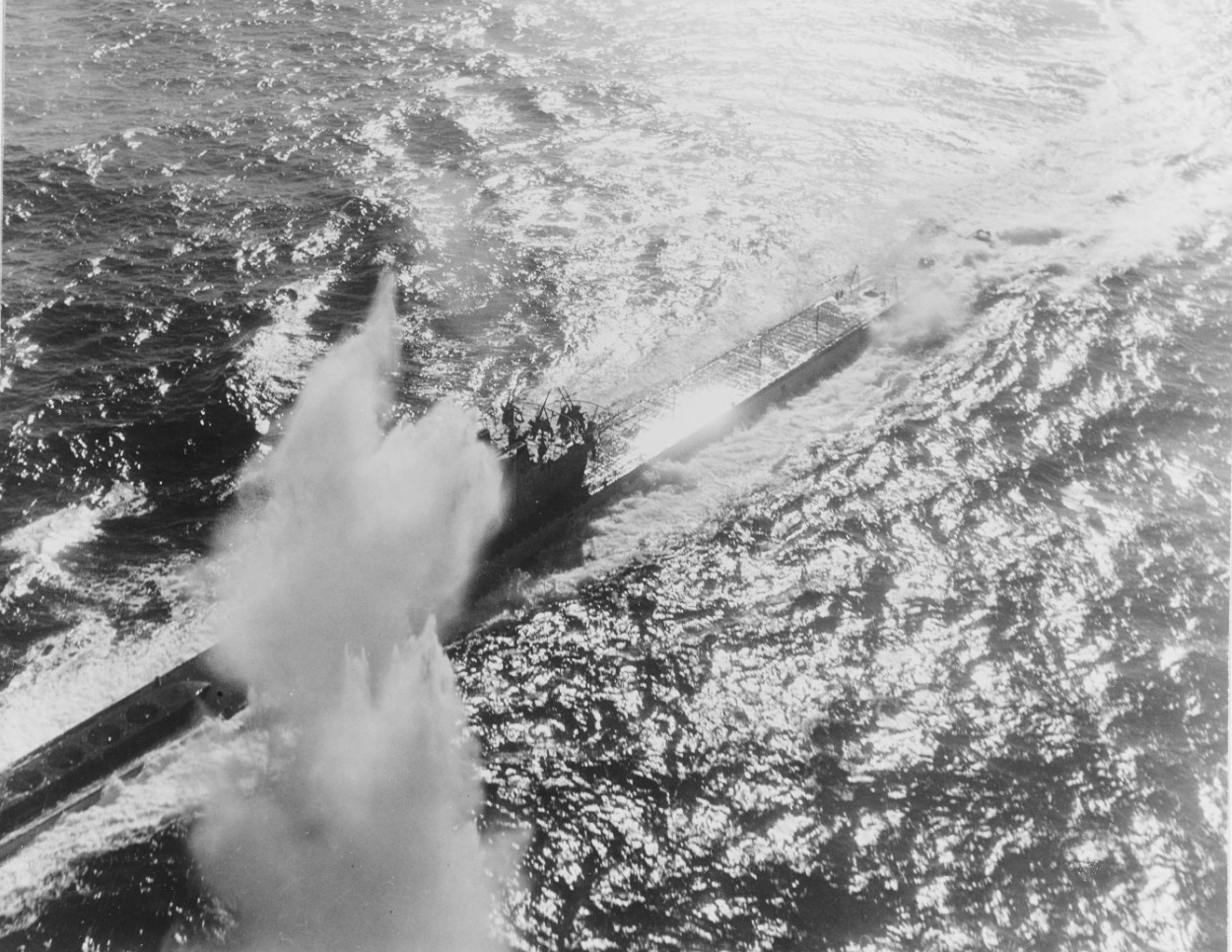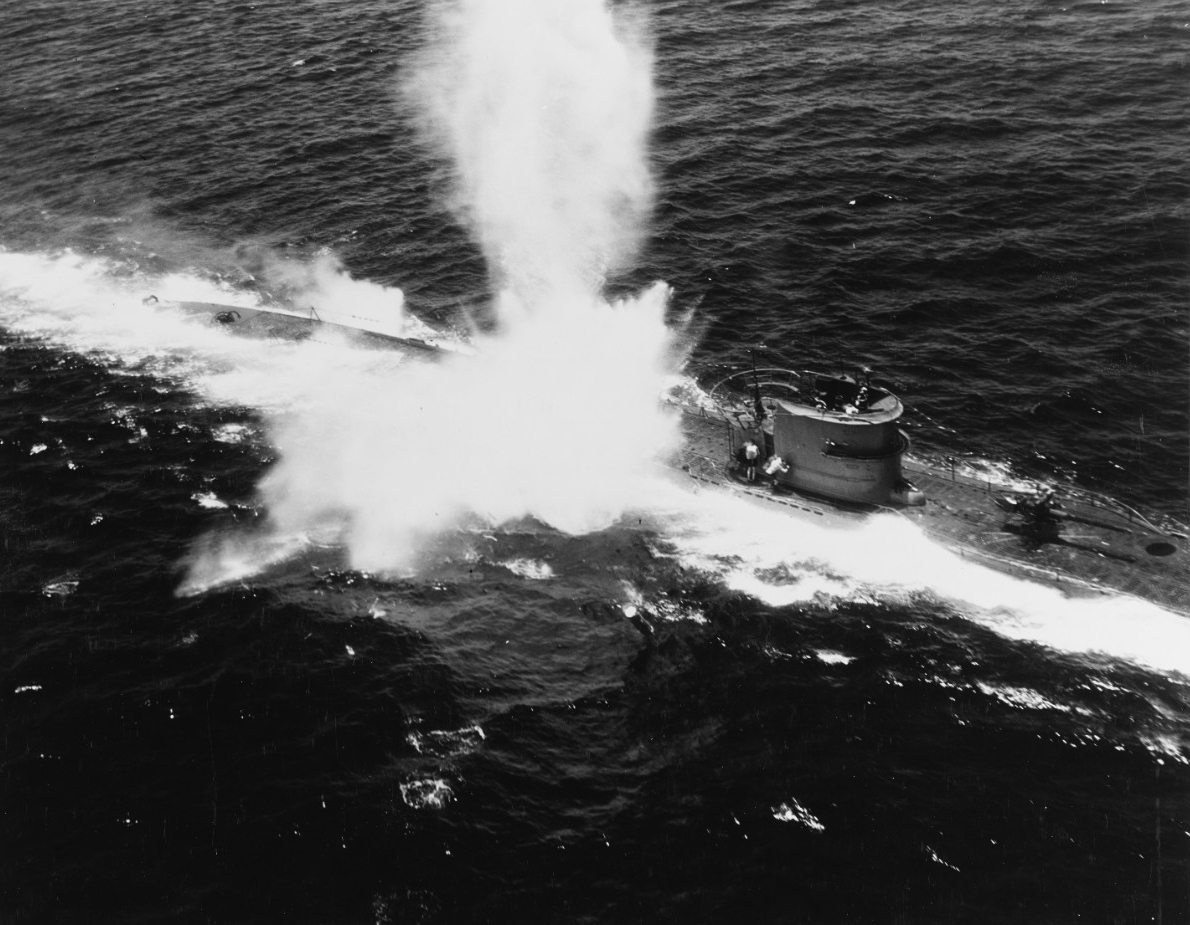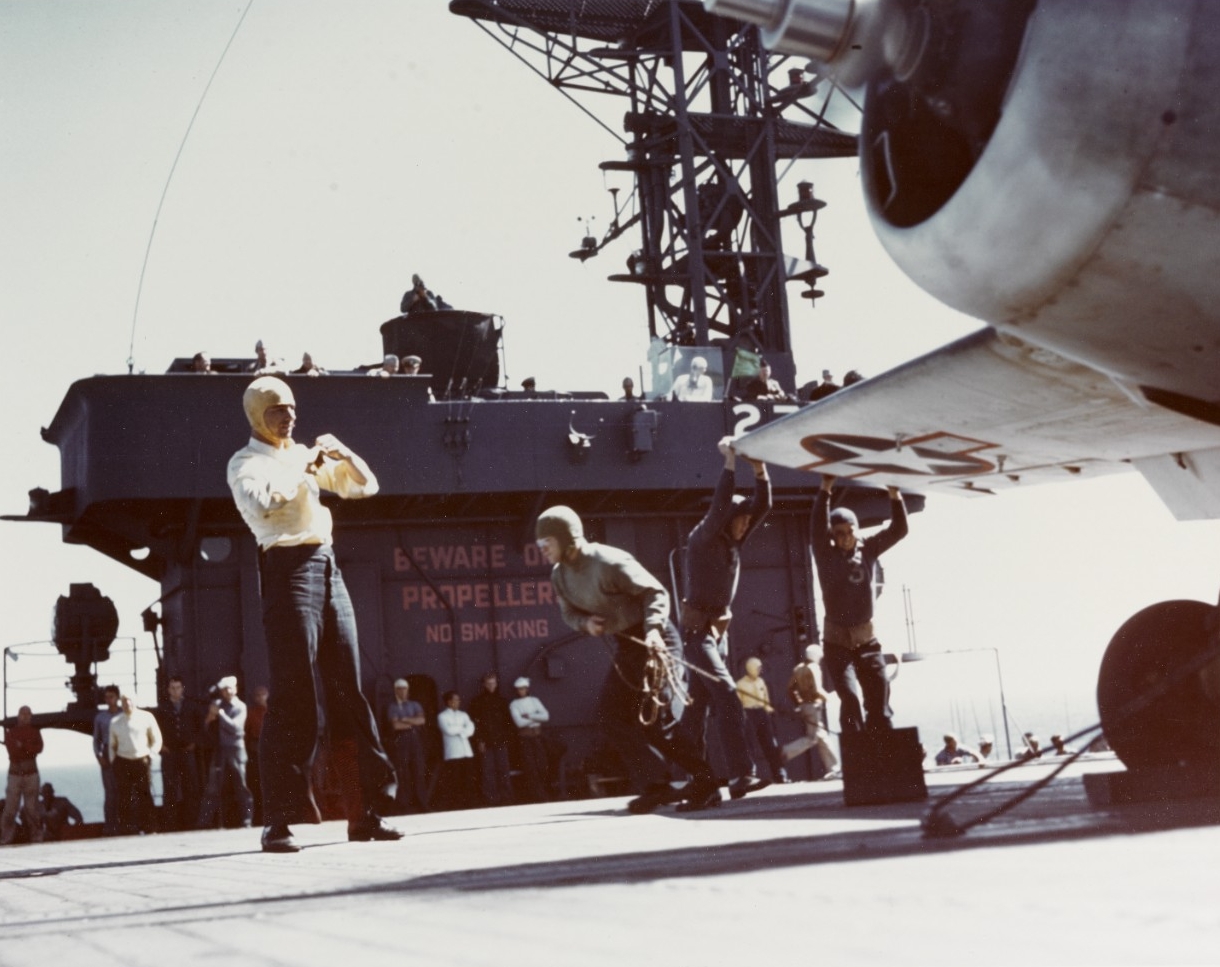Battle of the Atlantic
Countering the U-Boat Threat and Supplying the Allies
The Battle of the Atlantic pitted the German submarine force and surface units against the U.S. Navy, U.S. Coast Guard, Royal Navy, Royal Canadian Navy, and Allied merchant convoys. The convoys were essential to the British and Soviet war efforts (read more about the Arctic convoys to the USSR in "Convoy is to Scatter" and The Ordeal of PQ-17), and, later, supported the build-up and sustainment of U.S. forces in the European theater of operations.
The ultimate cost of victory in this vast area of operations was sobering: Between 1939 and 1945, 3,500 Allied merchant ships (14.5 million gross tons) and 175 Allied warships were sunk, and 72,200 Allied naval and merchant seamen lost their lives (read more in Extraordinary Heroism and Conspicuous Courage). The Germans lost 783 U-boats and approximately 30,000 sailors, three quarters of Germany's 40,000-man submarine force.
For a closer examination of the operational and strategic evolution of this transoceanic struggle, see the essay Battle of the Atlantic: An Overview.
This striking series of photos from July 1943 shows attacks on a German U-boat by aircraft from a U.S. Navy escort carrier. (NH-111313, NH-111308, NH-111284, and NH-111311, above.)
The following selected documents in the NHHC library—from both U.S. and German sources—provide fascinating insights into many aspects of Battle of the Atlantic operations:
- History of Convoy and Routing: United States Naval Administration in World War II
- German Submarine Activities on the Atlantic Coast of the United States and Canada
- The U-Boat War In The Caribbean: Opportunities Lost (Naval War College Paper by CDR Karl M. Hasslinger, USN)
- ULTRA and the Campaign Against the U-Boats in World War II (NSA Studies in Cryptology)
- German Naval Communication Intelligence: Battle of the Atlantic, Volume III
- Technical Intelligence From Allied Communications Intelligence: Battle of the Atlantic, Volume IV
- German Navy U-Boat (Submarine) Headquarters War Logs from World War II
- U-94 Sunk By USN PBY Plane and HMCS Oakville 8-27-42: Post Mortems on Enemy Submarines—Serial No. 5
- German U-Boat Casualties in World War II
- The Conduct of the War at Sea (Essay by Former Grossadmiral Karl Dönitz, German Kriegsmarine)
Sources and suggested reading:
Cressman, Robert J.,The Official Chronology of the U.S. Navy in World War II. Annapolis, MD/Washington, DC: Naval Institute Press/Naval Historical Center, 1999.
Dimbleby, Jonathan. The Battle of the Atlantic: How the Allies Won the War. New York: Oxford University Press, 2016.
Gannon, Michael. Operation Drumbeat: The Dramatic True Story of Germany’s First U-Boat Attacks Along the American Coast in World II. New York: Harper & Row Publishers, 1990.
Howarth, Stephen, and Derek Law, eds. The Battle of the Atlantic, 1939-1945: The 50th Anniversary International Naval Conference. Annapolis, MD: Naval Institute Press, 1994.
Morison, Samuel Eliot, History of United States Naval Operations in World War II, Vol. I—The Battle of the Atlantic, September 1939–May 1943. Boston: Little, Brown and Company, 1948.
———, History of United States Naval Operations in World War II, Vol. X—The Atlantic Battle Won, May 1943–May 1945. Boston: Little, Brown and Company, 1956.
Runyan, Timothy J., and Jan M. Copes, eds., To Die Gallantly: The Battle of the Atlantic. Boulder, CO: Westview Press, 1994.
Van der Vat, Dan. The Atlantic Campaign: World War II’s Great Struggle at Sea. New York: Harper and Row, 1988.

